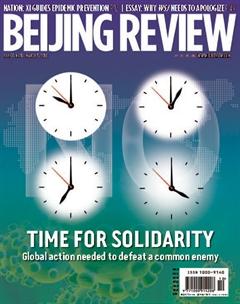All Hands on Deck
After a month of control measures, regions outside Hubei Province in central China have begun to report fewer or even zero novel coronavirus infections while the number of cured patients discharged from hospitals is increasing. Businesses and other organizations are restarting work in an orderly and secured way amid strengthened epidemic control.
Even in Hubei, the most affected province during the outbreak, the number of newly confirmed and suspected cases is decreasing.
However, while the situation in China is improving, there are signs of alarm in other countries. More countries and regions have reported increasing COVID-19 cases. The number of confirmed cases in Japan, the Republic of Korea, the United States, Italy and Iran has been rising despite lesser known links with the outbreak in China.
Though COVID-19 broke out in China, diseases know no borders, races or nationalities. If the epidemic becomes a pandemic, the consequences would be enormous for everyone.
The World Health Organization (WHO) declared the outbreak a public health emergency of international concern due to the fear that the virus could spread to other countries, especially those with fragile public health systems, and has urged the international community to unite in the fi ght against the virus.
However, the international community still doesnt seem to be heeding the call with some still voicing discriminatory views against China. They should realize that the increasing number of COVID-19 cases worldwide shows the urgency for the global community to pull together. In an era when technologies have greatly reduced physical distances and barriers, no country can afford to be complacent about its safety in the face of unconventional security challenges like viral outbreaks.
Now is the time for all to join the fight. Once the window closes, it might be too late. The international community should seize the opportunity to control the epidemic while China can provide useful and proven experience in fi ghting it.
The idea of a community with a shared future for humanity can be used as a guideline for disease prevention and control in the era of globalization. The implementation of this concept is essential to the success of global efforts to counter the epidemic.

